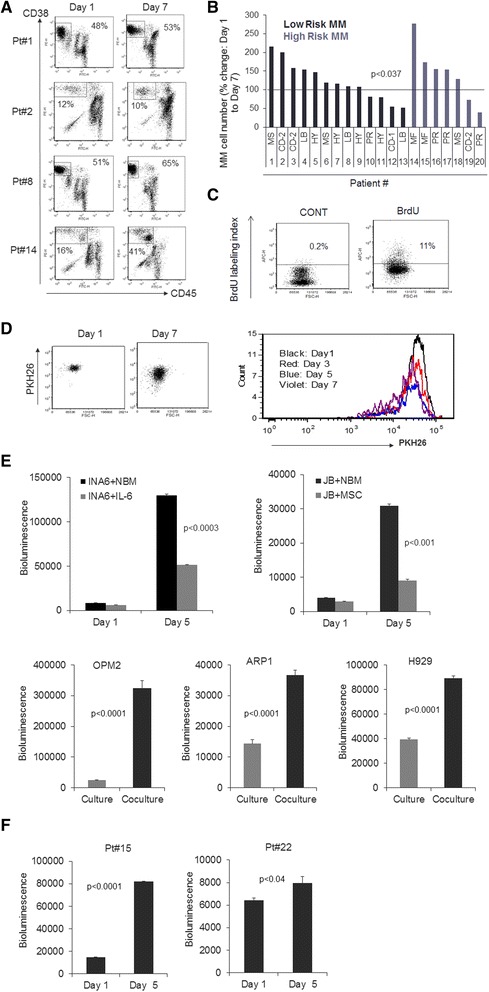Fig. 2.

Patients’ MM cells survive and grow in NBM coculture system, regardless of relevant molecular features. a Four representative patient samples analyzed by CD45/CD38 flow cytometry to determine percent MM cells in the NBM coculture system on days 1 and 7. b Changes in number of MM cells after 7 days compared to day 1 of coculture. MM cells from 20 patients characterized according to molecularly defined risk (low or high) [26] and molecular subtype (MS, CD-1, CD-2, LB, HY, PR, MF) [25]. In 14 of 20 experiments, the number of MM cells was 59 ± 12 % higher on day 7 than on day 1 (p < 0.0005). p < 0.037 for all 20 samples. c Incorporation of BrdU (detected by flow cytometry) in MM cells separated from the coculture system after 7 days. Coculture was unexposed (CONT) or exposed to BrdU for 2 h before analysis. d (Left panel) Flow cytometry analysis of membrane-bound PKH26 dye in CD45/CD38 gated MM cells (Pt#18) in the NBM coculture system on days 1 and 7, showing the loss of PKH26 signal in the proliferating MM cells. (Right panel) Histogram of PKH26 dye from CD45/CD38 gated MM cells on day 1, 3, 5 and 7 of coculture; decreasing heights of histogram peaks indicate that most MM cells disappear over time, but a small subpopulation persists and proliferates. e Bioluminescence analysis of luciferase-expressing stroma-dependent MM cell lines (INA6, JB) cocultured in the NBM system for 1 and 5 days and of luciferase-expressing standard MM lines (OPM2, ARP1, H929) cocultured in the NBM system (black bars) or cultured in their standard conditions (gray bars) for 5 days. f Bioluminescence analysis of luciferase-expressing patients’ MM cells on days 1 and 5 in the NBM coculture system
